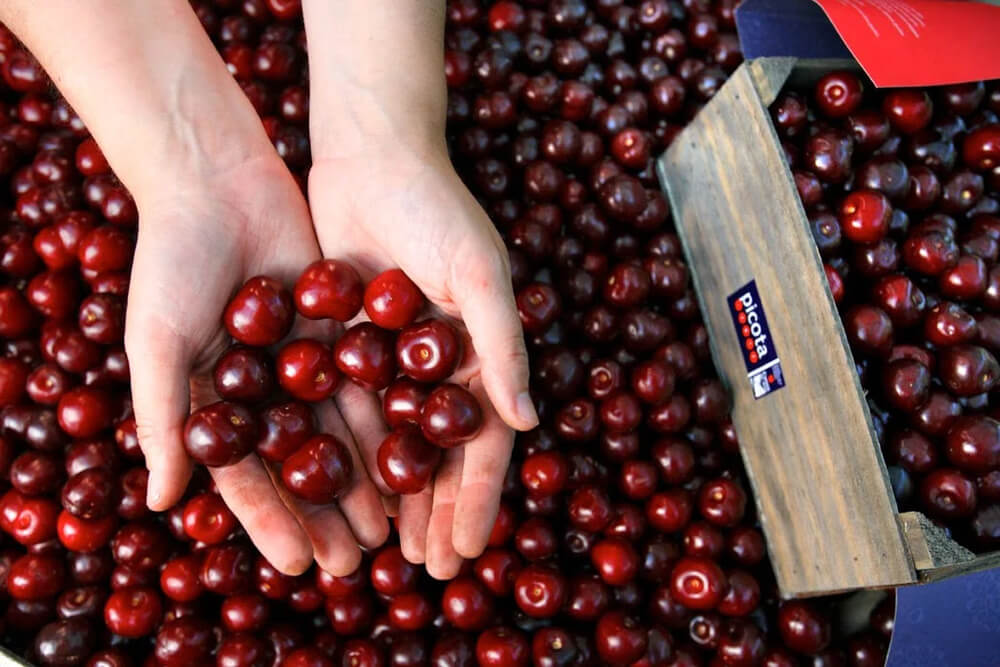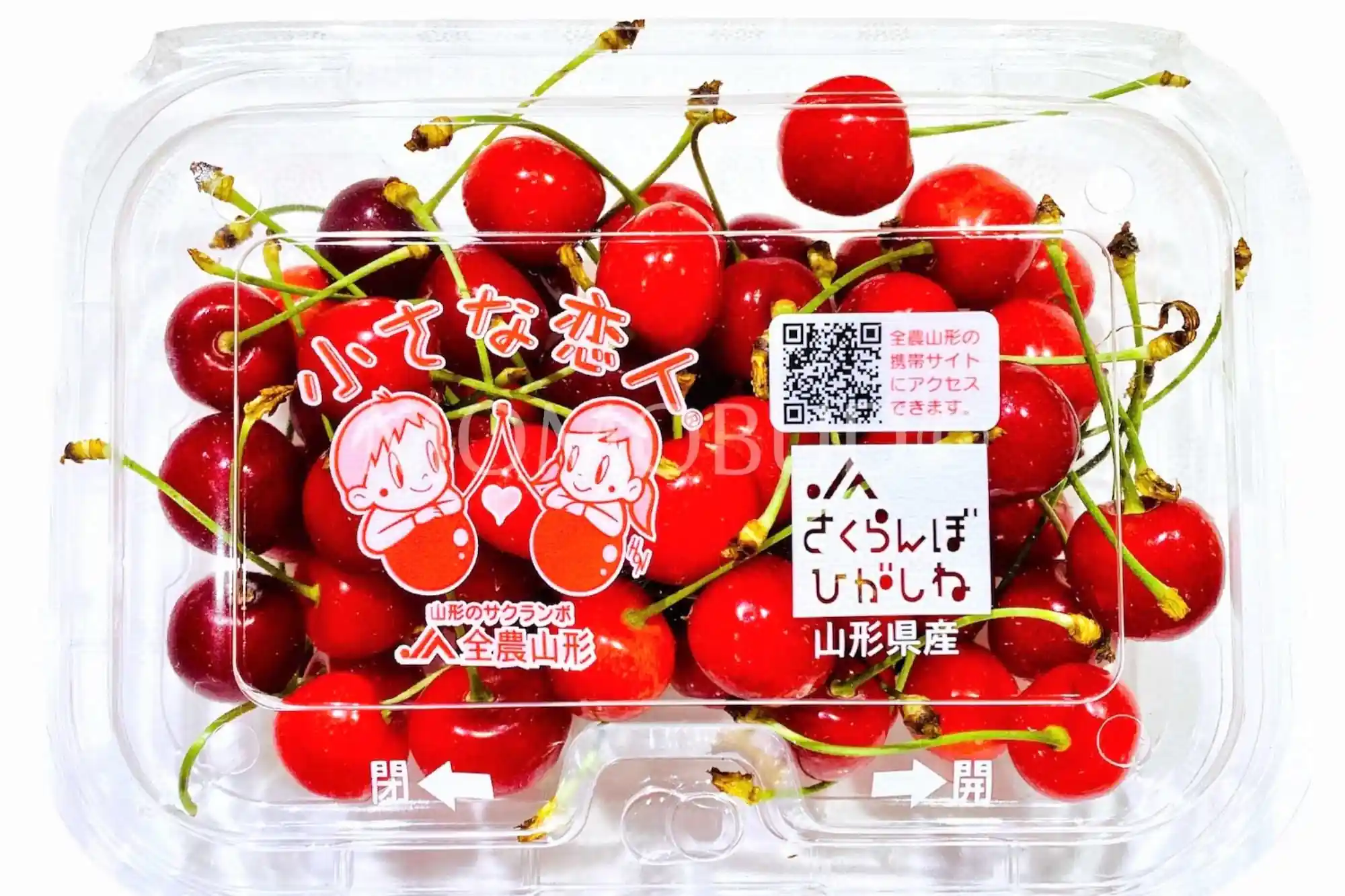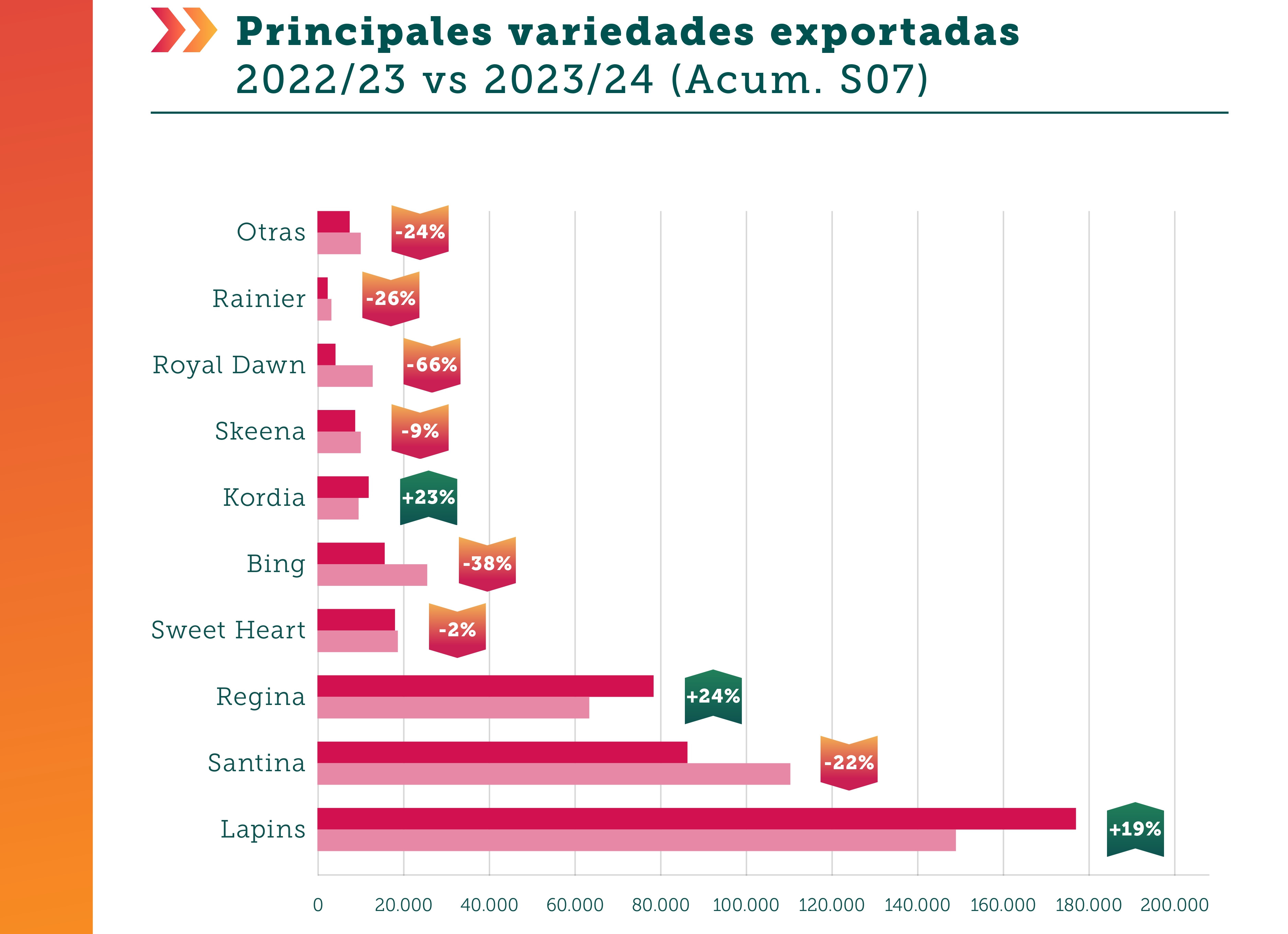The sweet cherry crop, internationally, is one of the most dynamic of the temperate fruit species, thanks to the numerous varietal improvement programmes that have made a wide range of new cultivars (cv) available to fruit growers and the availability of rootstocks that allow control of tree size compared to the traditional Franco.
Despite recent progress in terms of fruit size, productivity per hectare, controlled forms of farming and small tree sizes, production costs are very high and often not compatible with the selling prices of cherries, not to mention the growing shortage of farm labour.
The solution to reduce the high cost of production, which is highly dependent on the cost of harvesting (variable depending on the cultivar, rootstock, form of cultivation, etc., but estimated, on average, at around 40-50 % of the total cost) (Bargioni, 1982; Palmieri, 2018) would be there, but it is, strangely enough, totally ignored by both the cerasiculturists and the breeders.
Manual harvesting of stalkless cherries allows a time reduction of 40-45% compared to manual harvesting of traditional cultivars; mechanical harvesting by shaking of the same cultivars increases yield by ten times and more (Baldini et al., 1979). Stalkless cherries are those cultivars whose FRF (Fruit Retention Force) value, when ripe, is 200-300 g compared to 450-900 for 'normal' cultivars (Bargioni, 1982).
FRF is the force required to detach the drupe from the stalk; in cv's without a stalk, detachment occurs due to the formation of a layer of suberised cells that leaves the scar perfectly dry, unlike traditional cultivars from whose scar juice can escape with negative consequences for preservability and presentation.
Other non-marginal advantages of these cherries are the lower risk of abrasion during mechanical sorting due to rubbing between the stalks and the drupe and the absence of stalk desiccation, which negatively affects the time between harvest and marketing.
In Italy, the first to highlight the potential of this type of cherry were Bargioni in 1070 (6), Roselli in 1971 (15) and Roversi in 1972 (17).
But it was, in particular, Bargioni at the Institute of Fruit Growing in Verona who carried out a genetic improvement programme to establish cultivars suitable for both manual and mechanical harvesting of fruit without stalks and competitive with the best traditional cultivars of the time for pomological characters: Bargioni 137, Bianca di Verona, Corinna, Enrica, Vittoria (Tab. 1).
 Image 1: Vittoria variety cherries.
Image 1: Vittoria variety cherries.
Table 1 also lists the other cultivars that the bibliography indicates as suitable for harvesting without a peduncle; most are Italian (16), 7 of which are the result of genetic improvement and 9 of local germplasm, 4 Spanish, 2 Hungarian, 1 Greek, 1 Slovenian, 1 Canadian.
The Spanish cultivars, known as Picota, are indigenous to the Jerte valley in Extremadura and are the only stemless cherries successfully cultivated and marketed in Spain and several European countries (Flores, 2011; https://wwwjuntaex.es>dop-cer).
 Image 2: Picota cherries of the Ambrunés variety.
Image 2: Picota cherries of the Ambrunés variety.
The positive consumer response to Spanish Picota cherries is in line with a study on the cv Vittoria by Baldini, Bargioni and Costa (4.5), conducted in supermarkets in Verona and Milan and published in 1979, which documented the positive opinion of customers towards the stalkless cherries, not only for the cheaper selling price, but also for the presentation of the fruit and the ease of consumption.
The cv Enrica, Bargioni's last constitution without stalk and self-fertile, was included in the 'Varietal Orientation Lists' project financed by MiPAF, coordinated by the Istituto Sperimentale per la Frutticoltura in Rome and with experimental fields in the main Italian fruit-growing regions; at the University of Bari field it is still present 20 years after planting and still gives interesting results in terms of production, fruit size (8.5-9.5 g), consistency and flavour (Palasciano, com. pers.).
In 2007, Bargioni and Bassi (11) analysed the reasons for the lack of interest of Italian fruit growers, and not only, in cherries without stalks: one of the main reasons would be the mistrust of traders and their conviction that consumers would not easily accept a fruit presented in such a different way from a centuries-old tradition.
Another reason would be the belief that fruit without a stalk would keep less easily, whereas the available experimental and commercial evidence shows the opposite. A more important reason is undoubtedly the lower 'quality' of the currently available cultivars compared to the traditional cultivars, in terms of fruit size, flesh firmness, resistance to 'cracking', coverage of the ripening calendar.
The positive example of the Picota cherries, which are smaller in size than modern cherries, is justified by the centuries-old tradition of those mountain productions and the high taste quality of the fruit.
Like Prof. Bargioni at the time, I too believe in the future of stalkless cherries, but for this to become a reality, a genetic improvement programme is certainly needed to raise their quality level to that of traditional cultivars and widen the ripening range to cover the season from early to late varieties.
What is also needed is the confidence and initiative of courageous fruit growers who believe in this innovation that can give new impetus to a cherry-growing industry that experiences recurring crises, largely linked to production costs that are among the highest in temperate fruit production.
Table 1 - Cultivars suitable for harvest without stalks
| Cultivar | Average weight (g) | Origin | Bibliographic ref.
|
Ambrunés
| 7,5 | Spanish Picota (ES)
| 13, 19 |
| Bargioni 137 | 8,5 | Ist. Frutt. Verona (IT) | 10 |
| Bianca di Verona | 7,8 | Ist. Frutt. Verona (IT) | 2 |
| Benedetta | 7,2 | Ist. PSL, CNR, Firenze (IT) | 3 |
| Carlotta | 6,9 | Ist. PSL, CNR, Firenze (IT)
| 3 |
| Cerasa a sacco | 6,5 | Old Latium cultivar (IT)
| 1 |
| Corinna | 9 | Ist. Frutt. Verona (IT) |
|
| Cristalina | 8,7 | Agri-Food Res. Cent., Summer., BC., (CAN) | 3 |
| Enrica | 9 | Ist. Frutt. Verona (IT)
| 12 |
| Farlon | 6,5 | Old ER cultivar | 1 |
| Flamengo | 8 | U.C.S.C., Piacenza (IT) | 17 |
| Giurdan | 6,5 | Old ER cultivar
| 1 |
| Kavics | 6,9 | Res. Inst. Fruit., Budapest (HU) | 1 |
| Kozanka | 5,9 | Old Slovenian cultivar (SI) | 1 |
| Moncalieri precoce | 4 | Old Piedmontese cultivar (IT) | 1 |
| Picaion | 6,5 | Old ER cultivar
| 1 |
| Picanlon | 8 | Old ER cultivar
| 1 |
| Pico Colorado |
| Spanish Picota (ES)
| 13, 19 |
| Pico limon negro |
| Spanish Picota (ES)
| 13, 19 |
| Pico negro |
| Spanish Picota (ES)
| 13, 19 |
| San Giuliano | 6,5 | Old ER cultivar
| 1 |
| Szmolyiai Kemeny | 5,7 | Res. Inst. Fruit., Budapest (HU) | 1 |
| Tragana Edessa | 6,9 | Old Greek cultivar (EL) | 1 |
| Vittoria | 7 | Ist. Frutt. Verona (IT) | 6, 7 |
Sources:
- AA.VV., 2016. Atlante dei fruttiferi autoctoni italiani (Fideghelli C.,coordinatore). MiPAAF- Crea Centro di Ricerca per la Frutticoltura. Roma.
- Albertini A., Della Strada G., 1996. Monografia di cultivar di ciliegio dolce. MiRAAF-ISF, Rma.
- Albertini A., Della Strada G., 2001. Monografia di cultivar di Ciliegio dolce e acido. MAF-Istituto Sperimentale per la Frutticoltura, Roma.
- Baldini E., Bargioni G., Costa G., 1979. Raccolta meccanica delle ciliegie: prove operativa sulla cultivar Vittoria. L’inf. Agr., 15: 5519-5524.
- Baldini E., Bargioni G., Costa G., 1979. Giudizi dei consumatori sulle ciliegie raccolte a macchina. L’Inf. Agr., 21:6057-6066.
- Bargioni G., 1970. “Vittoria”, nuova cultivar di ciliegio dolce. Riv. di Ortoflorofrutt. It., n.4.
- Bargioni G., 1979. La ciliegia “Vittoria”: caratteristiche pomologiche e produttive. L’Inf. Agr. 24:6289-6291.
- Bargioni G., 1982. Il ciliegio dolce. Edagricole, Bologna.
- Bargioni, G., 1985. Corinna e Francesca, nuove cultivar di ciliegio dolce. Atti convegno “Indirizzi nel miglioramento genetico e nella coltura del ciliegio. Amm.ne Prov.le di Verona, 21 giugno.
- Bargioni G., Bassi G., 1999. La nuova cultivar Bargioni 137 di ciliegio dolce per la raccolta meccanica. L’Inf. Agr. n. 46:68-69.
- Bargioni G., Bassi G., 2007. Ciliegie senza peduncolo, perché non riscoprirle? L’Inf. Agr., 26: 55-56
- Bargioni G., Madinelli C. Cossio F., 1997. Enrica e Giulietta nuove cultivar autocompatibili di ciliegio dolce. Frutticoltura n. 6: 55.
- Flores P. D., 2011. La Picota del Jerte, una ciliegia differente? Convegno Nazionale del Ciliegio. Vignola, 8-10 Giugno.
- Palmieri A., 2018. Analisi economica: buone opportunità per frutticoltori specializzati. Frutticoltura n. 3: 10-13.
- Roselli G., 1971. Selezione di una cultivar di ciliegio dolce adatta alla raccolta integralmente meccanizzata. Agricoltura d’Italia, n.10.
- Roselli G., Benelli G., Morelli D., 1984. Due selezioni di ciliegio dolce per la raccolta integralmente meccanizzata. L’Inf. Agr., n.1.
- Roversi A., 1972. “Flamengo SRIM”: una cultivar piacentina di ciliegio dolce suscettibile di raccolta meccanizzata. Atti 2° Convegno del Ciliegio. CCIAA, Verona.
- Roversi A., 1979. Cultivar piacentine di ciliegio dolce suscettibili di raccolta integralmente meccanizzata. Ann. Fac. Agr. U.C.S.C., I.
- https://wwwjuntaex.es>dop-cer..
Prof. Carlo Fideghelli
Ex Director CREA Rome (IT)
Cherry Times - All rights reserved












